Home>Storage Ideas>Kitchen Storage>How To Clean Kitchen Countertops—Our Best Tricks For Any Material
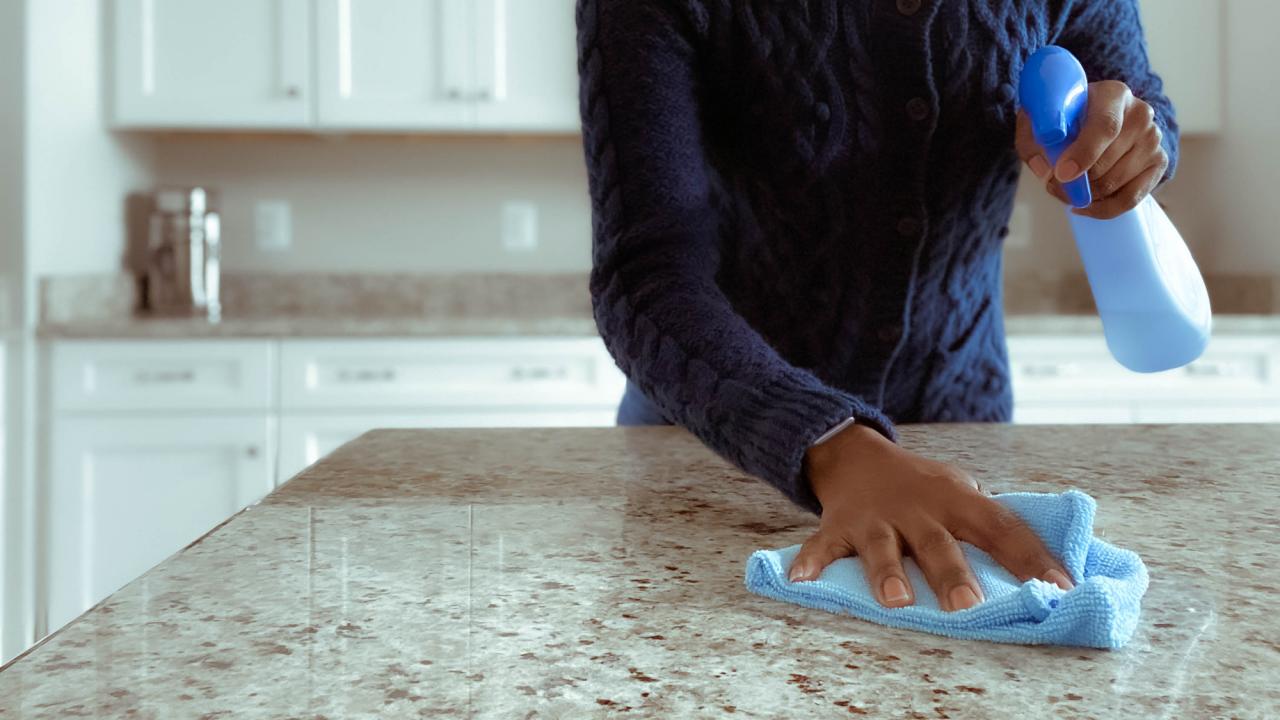

Kitchen Storage
How To Clean Kitchen Countertops—Our Best Tricks For Any Material
Modified: January 18, 2024
Discover the best kitchen storage ideas to keep your countertops clean and organized. Our expert tricks work for all countertop materials, ensuring a spotless and clutter-free kitchen!
(Many of the links in this article redirect to a specific reviewed product. Your purchase of these products through affiliate links helps to generate commission for Storables.com, at no extra cost. Learn more)
Introduction
Welcome to our comprehensive guide on how to clean kitchen countertops. A clean and organized kitchen not only helps to enhance the aesthetic appeal of your cooking space, but it also ensures a hygienic environment for food preparation. The countertops, being one of the most frequently used areas in the kitchen, require special attention when it comes to cleaning and maintenance.
In this article, we will provide you with expert tips and tricks for cleaning different types of kitchen countertops. Whether you have granite, quartz, laminate, stainless steel, butcher block, marble, concrete, or tile countertops, we’ve got you covered. From basic cleaning techniques to tackling stubborn stains and daily maintenance tips, we’ll walk you through the best practices for each material.
Before we dive into the specifics, it’s important to note that different countertop materials require different cleaning methods. It’s essential to understand the unique characteristics of your countertop and choose the appropriate cleaning products and techniques to ensure its longevity.
So, let’s get started and learn how to clean your kitchen countertops effectively, ensuring they remain spotless and beautifully maintained for years to come.
Key Takeaways:
- Keep your kitchen countertops spotless and well-maintained by following specific cleaning and maintenance techniques for granite, quartz, laminate, stainless steel, butcher block, marble, concrete, and tile materials. Use gentle cleaning solutions and targeted stain removal methods to preserve the beauty and functionality of each countertop surface.
- Ensure a hygienic and visually appealing cooking space by incorporating expert tips and tricks for cleaning and maintaining various kitchen countertops. From gentle cleaning solutions to targeted stain removal methods, each countertop material requires specific care to prolong its longevity and aesthetic appeal.
Read more: How To Fix E2 Error In A Washing Machine
Cleaning Granite Countertops
Granite countertops are a popular choice for their durability, natural beauty, and resistance to heat and scratches. To keep your granite countertops looking their best, regular cleaning is essential. Here are the steps for basic cleaning, removing stains, and daily maintenance:
Basic Cleaning:
Start by removing any loose debris or crumbs from the countertop surface using a soft cloth or a gentle brush. Avoid using abrasive materials that can scratch the granite.
Next, mix a mild dish soap with warm water to create a gentle cleaning solution. Dip a soft cloth or sponge into the solution and gently wipe down the granite surface, ensuring you cover the entire countertop.
Rinse the cloth or sponge with clean water and go over the countertop again to remove any soap residue. This step is crucial to prevent buildup and maintain the natural shine of the granite.
Finally, dry the countertop with a clean, lint-free cloth to prevent water spots or streaks from forming.
Removing Stains:
If you encounter stubborn stains on your granite countertops, it’s important to treat them carefully to avoid damaging the surface. Here are some common types of stains and how to remove them:
- Oil-based stains: These can include cooking oil, grease, or food stains. Begin by creating a paste using baking soda and water. Apply the paste to the stained area and cover it with plastic wrap. Allow it to sit overnight, then gently scrape off the dried paste using a plastic or wooden scraper. Rinse the area with water and dry it thoroughly.
- Water stains: These may occur if water or other liquids are left sitting on the countertop for an extended period. To remove water stains, create a paste with a 50/50 mixture of baking soda and hydrogen peroxide. Apply the paste to the stain, cover it with plastic wrap, and let it sit for a few hours. Rinse the area and dry it thoroughly.
- Organic stains: This includes stains from coffee, tea, or fruit juices. Create a paste using baking soda and water, apply it to the stain, and cover it with plastic wrap. Allow it to sit overnight, then rinse and dry the area.
Daily Maintenance Tips:
To keep your granite countertops looking their best on a daily basis, follow these maintenance tips:
- Wipe up spills promptly to prevent them from seeping into the granite.
- Avoid using harsh or abrasive cleaners that can strip away the protective sealant on the granite.
- Use cutting boards and trivets to protect the surface from scratches and heat damage.
- Consider using granite-specific sealing products to maintain the natural shine and protect the surface.
By following these cleaning and maintenance tips, you can keep your granite countertops in excellent condition, preserving their beauty and longevity for years to come.
Cleaning Quartz Countertops
Quartz countertops have gained immense popularity due to their durability, low maintenance, and wide range of design options. Unlike natural stone countertops, quartz is engineered and non-porous, making it resistant to stains and bacteria. To keep your quartz countertops looking pristine, follow these steps for general cleaning, tackling stubborn stains, and preventative care:
General Cleaning:
To maintain the cleanliness of your quartz countertops on a regular basis, follow these simple steps:
- Start by wiping down the surface with a soft cloth or sponge to remove any loose debris or crumbs.
- Mix a mild dish soap with warm water to create a gentle cleaning solution.
- Dip a soft cloth or sponge into the solution and wipe down the countertops, ensuring you cover the entire surface.
- Rinse the cloth or sponge with clean water and go over the countertops again to remove any soap residue.
- Dry the countertops with a clean, lint-free cloth to prevent water spots or streaks.
Dealing with Stubborn Stains:
While quartz countertops are highly resistant to stains, some persistent substances may require additional attention. Here’s how to handle stubborn stains:
- For greasy or oily stains, use a gentle dish soap mixed with warm water and clean the affected area. Rinse thoroughly with clean water and dry the surface.
- For dried-on or sticky stains, gently scrape off the residue with a plastic or silicone scraper. Then, clean the area with a mild cleaning solution and rinse well.
- For tough stains like ink or permanent markers, use a non-abrasive household cleaner and a soft cloth. Allow the cleaner to sit on the stain for a few minutes before rinsing and drying.
Preventative Care:
To keep your quartz countertops looking their best, it’s essential to incorporate preventative care into your cleaning routine:
- Avoid placing hot pots and pans directly on the surface. Use trivets or hot pads to protect the quartz from heat damage.
- Use cutting boards when preparing food to prevent scratches on the surface.
- Avoid using abrasive cleaners, scouring pads, or harsh chemicals on quartz countertops, as they can damage the surface.
- Wipe up spills immediately, especially acidic substances like lemon juice or vinegar, as they can potentially etch the quartz surface.
By following these cleaning and preventative care tips, you can keep your quartz countertops looking beautiful and pristine for years to come. Remember, consistency is key in maintaining the longevity and aesthetics of your quartz surfaces.
Cleaning Laminate Countertops
Laminate countertops are a popular and affordable choice for many kitchens. With their durable and easy-to-clean surface, laminate countertops can withstand everyday use. To keep your laminate countertops clean and looking their best, follow these steps for routine cleaning, removing tough stains, and maintaining their overall condition:
Routine Cleaning:
Regular cleaning is essential to maintain the appearance and hygiene of your laminate countertops. Follow these steps for routine cleaning:
- Start by wiping down the countertops with a soft cloth or sponge to remove any loose debris or crumbs.
- Fill a spray bottle with a mixture of mild dish soap and warm water.
- Spray the cleaning solution onto the countertops and use a soft cloth or sponge to wipe down the surface, making sure to cover the entire area.
- Rinse your cloth or sponge with clean water and go over the countertops again to remove any soap residue.
- Dry the countertops with a clean, lint-free cloth to prevent water spots.
Removing Tough Stains:
If you encounter stubborn stains on your laminate countertops, follow these tips to remove them effectively:
- For grease or food stains, apply a paste made of baking soda and water to the affected area. Gently scrub the stain with a soft cloth or sponge, then rinse well with clean water and dry the countertop.
- For ink or marker stains, use a cloth dampened with rubbing alcohol or nail polish remover. Gently blot the stain until it lifts, then rinse and dry the countertop.
- For tough, dried-on stains, such as coffee or tea, create a paste using equal parts baking soda and hydrogen peroxide. Apply the paste to the stain, let it sit for a few minutes, then scrub gently with a soft cloth. Rinse well and dry the countertop.
Keeping Laminate Countertops in Top Shape:
To maintain the overall condition and longevity of your laminate countertops, consider implementing these care tips:
- Avoid placing hot pans or pots directly on the laminate surface. Use trivets or hot pads to protect the countertop from heat damage.
- Use cutting boards when chopping or slicing to prevent scratches on the laminate surface.
- Avoid using abrasive cleaners, scouring pads, or steel wool, as they can scratch or dull the laminate.
- Wipe up spills promptly to prevent them from seeping into the laminate and causing staining or damage.
- Consider using a laminate-specific cleaner or a mixture of vinegar and water for deeper cleaning on occasion.
By following these cleaning and maintenance tips, you can ensure that your laminate countertops continue to look their best and provide a functional and attractive surface in your kitchen.
Cleaning Stainless Steel Countertops
Stainless steel countertops have become increasingly popular for their sleek and modern appearance. They are not only durable but also resistant to heat and bacteria. To maintain the pristine look of your stainless steel countertops, follow these steps for cleaning stainless steel, removing water spots and streaks, and polishing the surfaces:
Cleaning Stainless Steel:
To keep your stainless steel countertops clean and free of dirt and grime, follow these simple steps:
- Begin by wiping down the surface with a soft cloth or sponge to remove any loose debris or crumbs.
- Fill a spray bottle with a mixture of equal parts water and mild dish soap.
- Spray the cleaning solution onto the countertops and use a soft cloth or sponge to wipe down the surface, making sure to cover the entire area.
- Rinse your cloth or sponge with clean water and go over the countertops again to remove any soap residue.
- Dry the countertops with a clean, lint-free cloth to prevent water spots or streaks.
Removing Water Spots and Streaks:
Water spots and streaks can sometimes occur on stainless steel countertops, but they are easily remedied with the following steps:
- Mix a solution of equal parts vinegar and water in a spray bottle.
- Spray the solution onto the countertops and use a soft cloth or sponge to gently rub the affected areas.
- Rinse the cloth or sponge with clean water and wipe down the countertops to remove any vinegar residue.
- Dry the countertops thoroughly with a clean, lint-free cloth to ensure a streak-free finish.
Polishing Stainless Steel Surfaces:
To restore the shine and luster of your stainless steel countertops, regular polishing is recommended. Follow these steps to polish the surfaces:
- Apply a small amount of stainless steel cleaner or baby oil onto a soft cloth.
- Gently rub the cloth onto the stainless steel surface, following the grain pattern.
- Continue polishing until you achieve the desired shine and remove any fingerprints or smudges.
- Use a clean, dry cloth to buff the countertops for the final touch.
It’s essential to note that when cleaning and polishing stainless steel countertops, avoid abrasive cleaners, scouring pads, or steel wool, as they can scratch and damage the surface. Stick to soft cloths and non-abrasive cleaning solutions to preserve the beauty and integrity of the stainless steel.
By following these cleaning and maintenance tips, you can keep your stainless steel countertops looking sleek, shiny, and free of water spots and streaks. Remember to regularly clean and polish them to maintain their appearance and extend their lifespan.
Cleaning Butcher Block Countertops
Butcher block countertops are not only functional but also add a warm and inviting look to a kitchen. These countertops require regular cleaning and maintenance to keep them in top shape. Here are the steps to clean butcher block countertops, remove stains and odors, and properly seal and restore the surface:
Regular Cleaning and Maintenance:
To maintain the cleanliness of your butcher block countertops on a regular basis, follow these steps:
- Start by wiping down the surface with a damp cloth or sponge to remove any loose debris or crumbs.
- Using a mild dish soap and warm water, create a gentle cleaning solution.
- Dip a soft cloth or sponge into the solution and scrub the countertops, making sure to cover the entire surface area.
- Rinse the cloth or sponge with clean water and go over the countertops again to remove any soap residue.
- Thoroughly dry the countertops using a clean, lint-free cloth to prevent the wood from absorbing excess moisture.
Removing Stains and Odors:
Over time, butcher block countertops may develop stains and absorb odors. If you encounter these issues, follow these tips to remove them:
- For stains, sprinkle coarse salt onto the affected area and rub it in with a lemon half. Let it sit for a few minutes before wiping it off with a damp cloth. For tougher stains, create a paste using baking soda and water and scrub gently. Rinse and dry the countertops thoroughly.
- To eliminate odors, mix equal parts water and white vinegar in a spray bottle. Spray the solution onto the countertops and let it sit for a few minutes. Wipe it away with a damp cloth, rinse, and dry the surface.
Sealing and Restoring the Butcher Block:
To protect and restore the beauty of your butcher block countertops, it’s crucial to seal and periodically reseal the surface. Follow these steps:
- First, ensure that the countertops are clean and completely dry.
- Apply a food-safe finish or mineral oil to the surface, using a clean cloth or brush.
- Allow the oil or finish to soak into the wood for the recommended amount of time, typically overnight or as indicated on the product label.
- Wipe off any excess oil or finish using a soft cloth, and allow the countertops to dry and cure for the recommended time.
- Periodically reapply the oil or finish as needed to maintain the protective layer and enhance the natural beauty of the wood.
It’s important to note that butcher block countertops should be regularly oiled or finished to prevent drying, cracking, and potential water damage.
By following these cleaning and maintenance tips, you can keep your butcher block countertops in excellent condition, prolonging their lifespan and preserving their natural charm in your kitchen. Regular care and attention will keep your countertops looking beautiful and functional for years to come.
Cleaning Marble Countertops
Marble countertops are prized for their timeless elegance and natural beauty. To ensure these stunning surfaces maintain their pristine appearance, it’s important to follow proper cleaning techniques. Here are the steps for gently cleaning marble countertops, removing stubborn stains, and polishing and maintaining the marble surfaces:
Gentle Cleaning Techniques:
To keep your marble countertops looking their best, it’s crucial to use gentle cleaning methods to avoid damaging the delicate surface:
- Start by wiping down the countertop with a soft, microfiber cloth to remove any loose debris or crumbs.
- Prepare a mild cleaning solution by mixing warm water with a gentle pH-neutral cleaner specifically formulated for marble surfaces.
- Dip a soft cloth or sponge into the cleaning solution and gently wipe down the marble countertops, ensuring you cover the entire area.
- Rinse the cloth or sponge with clean water and go over the countertops again to remove any soap residue.
- Dry the countertops with a soft, lint-free cloth to prevent water spots or streaks.
Removing Stubborn Stains:
If you encounter pesky stains on your marble countertops, follow these tips to tackle them effectively:
- For organic stains like coffee or food, create a poultice by mixing baking soda with water until it forms a paste. Apply the paste to the stain, cover it with plastic wrap, and let it sit for 24-48 hours. Gently remove the dried paste and rinse the area with water.
- For oil-based stains, such as cooking oil or grease, apply a generous amount of a marble-specific stain remover to the affected area. Leave it on for the recommended time, then scrub gently with a soft cloth or sponge. Rinse thoroughly and dry the countertop.
- For ink or colored stains, consult a professional stone specialist or marble restoration expert to avoid potential damage during the removal process.
Polishing and Maintaining Marble Surfaces:
Regular maintenance is crucial to preserve the sheen and luster of your marble countertops. Follow these steps for polishing and maintaining the surfaces:
- Use a specially formulated marble polish to restore the shine of the countertops. Apply the polish according to the product instructions and buff the surface using a clean, soft cloth to achieve a glossy finish.
- To prevent scratches, use cutting boards and avoid placing hot pots or pans directly on the marble surface. Use trivets or hot pads for heat protection.
- Wipe up spills immediately, especially those from acidic substances like citrus juice or vinegar, as they can etch the marble. Use a soft cloth or sponge and mild cleaning solution to clean the affected area.
- Consider applying a high-quality marble sealer to provide an additional layer of protection against stains and moisture. Follow the manufacturer’s instructions for application and reapplication.
By implementing these gentle cleaning techniques and regular maintenance practices, you can keep your marble countertops looking stunning and maintain their timeless beauty for years to come. Remember, proper care is essential to preserve the integrity and appearance of marble surfaces.
Cleaning Concrete Countertops
Concrete countertops have gained popularity for their durability and unique aesthetic appeal. To ensure your concrete countertops retain their beauty and longevity, proper cleaning methods are essential. Here are the steps for basic cleaning methods, treating stains and spills, and sealing and protecting concrete countertops:
Basic Cleaning Methods:
To maintain the cleanliness of your concrete countertops, follow these basic cleaning methods:
- Start by wiping down the surface with a soft cloth or sponge to remove any loose debris or crumbs.
- Mix a gentle pH-neutral cleaner with warm water to create a cleaning solution.
- Dip a soft cloth or sponge into the solution and gently wipe down the countertops, ensuring you cover the entire surface area.
- Rinse the cloth or sponge with clean water and go over the countertops again to remove any soap residue.
- Dry the countertops with a clean, lint-free cloth to prevent water spots or streaks.
Treating Stains and Spills:
Concrete countertops are susceptible to stains and spills, but with the right treatment, you can effectively remove them:
- For food stains, mix a paste using baking soda and water. Apply the paste to the stained area, scrub gently with a soft cloth or sponge, and rinse well with clean water.
- For oil-based stains, such as cooking oil or grease, use a degreasing agent or a poultice made from a mixture of water and a liquid cleaner specifically formulated for concrete surfaces. Apply the poultice to the stain, cover it with plastic wrap, and let it sit for a few hours. Rinse thoroughly and dry the countertop.
- For wine or coffee stains, create a paste using hydrogen peroxide and a powdered cleaner. Apply the paste to the stain, cover it with plastic wrap, and let it sit overnight. Rinse well with clean water and dry the surface.
Sealing and Protecting Concrete Countertops:
Properly sealing and protecting concrete countertops is crucial to keep them resistant to stains and maintain their overall appearance:
- Ensure that your countertops are clean and completely dry before applying a concrete sealer.
- Using a paint roller or brush, apply a thin, even coat of concrete sealer to the surface. Follow the manufacturer’s instructions for application and drying time.
- Allow the sealer to cure for the recommended duration before using the countertops.
- Regularly inspect the sealant and reapply it as needed, typically every 1-3 years or as specified by the manufacturer.
- Avoid placing hot pans or pots directly onto the concrete surface. Use trivets or hot pads to prevent heat damage.
- Wipe up spills promptly to prevent stains and etching.
By following these cleaning methods and taking proper care of your concrete countertops, you can preserve their beauty and functionality for years to come. Remember, regular cleaning, treating stains promptly, and periodically resealing are key to maintaining the appearance and durability of concrete surfaces.
Cleaning Tile Countertops
Tile countertops are popular for their versatility and durability. With proper cleaning and maintenance, tile countertops can remain beautiful and functional for years to come. Here are some everyday cleaning tips, methods for removing grout stains, and essential steps for maintaining tile countertops:
Everyday Cleaning Tips:
To keep your tile countertops clean and free from dirt and grime, follow these everyday cleaning tips:
- Start by wiping the countertops with a soft cloth or sponge to remove any loose debris or crumbs.
- Prepare a mild cleaning solution by mixing warm water with a few drops of a gentle dish soap.
- Dip a soft cloth or sponge into the cleaning solution and gently wipe down the tile countertops, ensuring you cover all the tiled areas.
- Rinse the cloth or sponge with clean water and go over the countertops again to remove any soap residue.
- Dry the countertops with a clean, lint-free cloth to prevent water spots or streaks.
Removing Grout Stains:
Over time, grout lines between the tiles can become stained or discolored. Here’s how to remove grout stains effectively:
- Create a paste using baking soda and water.
- Apply the paste to the stained grout lines, using a soft brush or an old toothbrush to scrub the area gently.
- Let the paste sit on the grout for a few minutes, then rinse it off with clean water.
- If the stains persist, you can try using a mixture of equal parts vinegar and water or a specialized grout cleaner. Follow the product instructions carefully.
- After removing the stains, thoroughly rinse the countertops to remove any cleaning residue.
- Dry the countertops with a cloth to prevent moisture from seeping into the grout lines.
Maintaining Tile Countertops:
To ensure the longevity and appearance of your tile countertops, follow these essential maintenance steps:
- Regularly inspect the tiles and grout lines for any cracks or chipped areas. Repair or replace any damaged tiles or grout promptly.
- Avoid using abrasive cleaners or scrubbing brushes with stiff bristles, as they can scratch the tiles or damage the grout.
- Protect the tiled surface by using cutting boards and trivets to avoid scratches and heat damage.
- Wipe up spills immediately to prevent staining or damage to the grout.
- Periodically apply a high-quality grout sealer to protect the grout lines from staining and discoloration. Follow the manufacturer’s instructions for application and reapplication.
By following these cleaning and maintenance tips, you can keep your tile countertops looking their best and extend their lifespan. Regular cleaning and proper care will help you enjoy the beauty and function of your tile countertops for many years to come.
Conclusion
Taking care of your kitchen countertops is essential to maintaining their beauty, functionality, and longevity. Whether you have granite, quartz, laminate, stainless steel, butcher block, marble, concrete, or tile countertops, each material requires specific cleaning and maintenance techniques. By following the expert tips and tricks provided in this comprehensive guide, you can keep your kitchen countertops looking their best for years to come.
For granite countertops, regular cleaning with mild dish soap and warm water, along with gentle stain removal techniques, will help preserve their natural beauty. Quartz countertops can be cleaned with a mild dish soap and warm water mixture, and stubborn stains can be treated with specialized stain removers. Laminate countertops require routine cleaning with a mild dish soap and warm water solution, with tough stains being addressed using baking soda and water pastes. Stainless steel countertops can be cleaned using a gentle dish soap and warm water mixture, and water spots and streaks can be removed using vinegar and water solutions. Butcher block countertops need regular cleaning with gentle soap and water, stain removal with baking soda or lemon, and periodic sealing to maintain their condition. For marble countertops, gentle cleaning with pH-neutral cleaners, stain removal with baking soda or poultices, and regular polishing are key. Concrete countertops should be cleaned with a mild cleaner, treated for stains with specific stain removers, and regularly sealed to ensure their longevity. Tile countertops require everyday cleaning with a mild dish soap and warm water solution, grout stain removal with baking soda or vinegar mixtures, and regular maintenance to repair any damages and protect the grout.
By incorporating these cleaning and maintenance practices into your kitchen routine, you can ensure that your countertops not only look their best but also remain hygienic and resistant to stains and damage. Additionally, remember to follow specific guidelines for each countertop material to avoid using harsh or abrasive materials that could cause harm.
With proper care and attention, your kitchen countertops will continue to be a functional and visually appealing part of your cooking space. Enjoy the beauty and durability of your countertops with the confidence that they are clean, well-maintained, and ready to serve your culinary needs.
Conclusion
Taking care of your kitchen countertops is essential to their longevity and maintaining a clean and organized cooking space. Whether you have granite, quartz, laminate, stainless steel, butcher block, marble, concrete, or tile countertops, each requires specific cleaning techniques. By following these expert tips and tricks, you can keep your countertops looking their best while ensuring a hygienic environment in your kitchen.
Granite countertops can be cleaned with a gentle dish soap solution, and stains can be removed using baking soda and hydrogen peroxide pastes. Quartz countertops should be cleaned with a mild dish soap and warm water mixture, and stubborn stains can be treated with specialized stain removers. Laminate countertops require routine cleaning with a mild dish soap solution, and tough stains can be tackled with baking soda and water pastes. Stainless steel countertops can be cleaned with a gentle dish soap solution, and water spots and streaks can be removed with vinegar and water sprays. Butcher block countertops need regular cleaning with gentle soap and water, stain removal with baking soda or lemon, and periodic sealing to maintain their condition.
Marble countertops should be cleaned with gentle pH-neutral cleaners, stains can be removed with baking soda or poultices, and regular polishing is required to maintain the shine. Concrete countertops should be regularly cleaned with mild cleaners, stains treated with specific stain removers, and sealing to protect the surface. Tile countertops require everyday cleaning with mild dish soap and warm water, grout stains can be treated with baking soda or vinegar mixtures, and regular maintenance is necessary to repair any damages.
By following these cleaning and maintenance techniques, you can ensure that your kitchen countertops remain clean, hygienic, and visually appealing for years to come. Remember to use the appropriate cleaning products and techniques for each specific countertop material and avoid using harsh or abrasive cleaners that could cause damage. With proper care, your countertops will continue to be a functional and beautiful part of your kitchen, enhancing both its functionality and aesthetic appeal.
Frequently Asked Questions about How To Clean Kitchen Countertops—Our Best Tricks For Any Material
Was this page helpful?
At Storables.com, we guarantee accurate and reliable information. Our content, validated by Expert Board Contributors, is crafted following stringent Editorial Policies. We're committed to providing you with well-researched, expert-backed insights for all your informational needs.


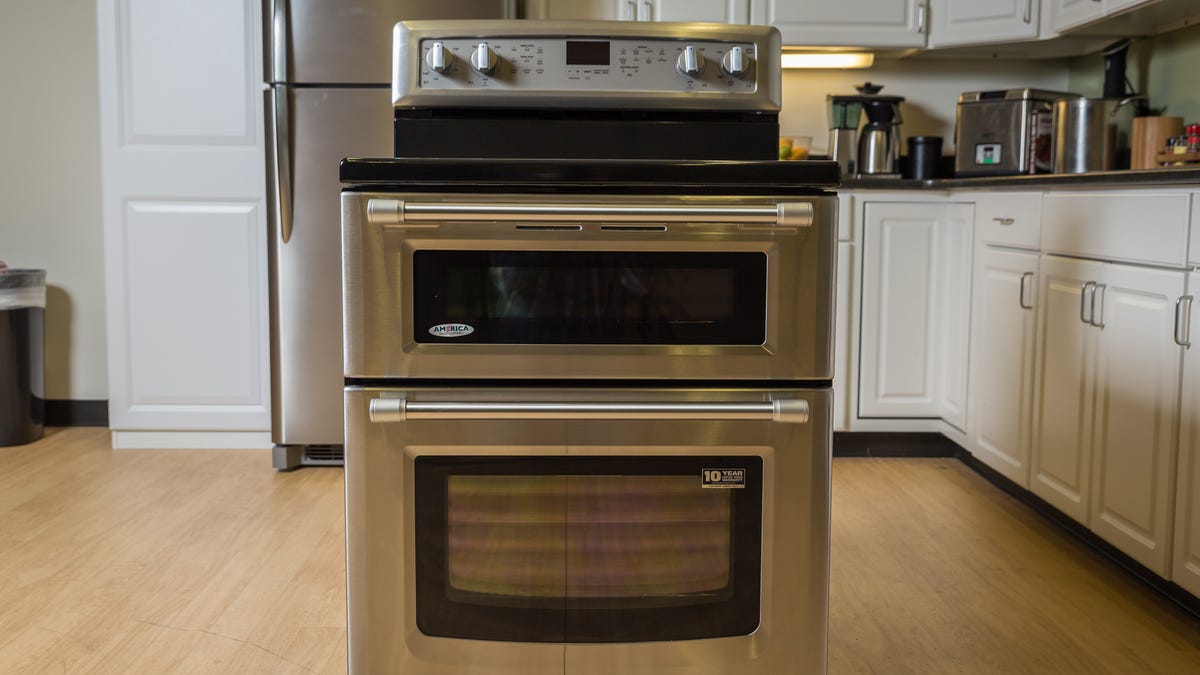
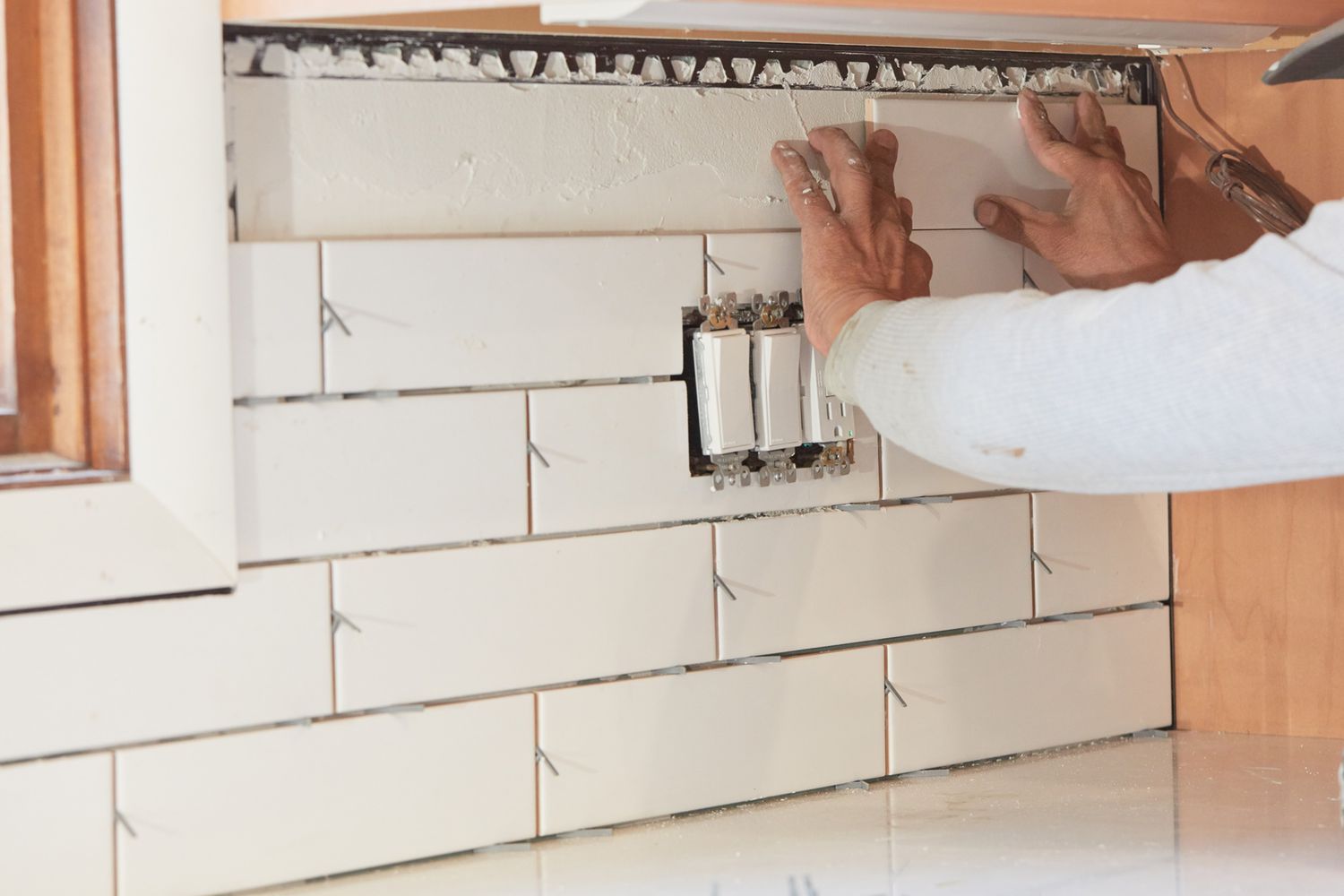
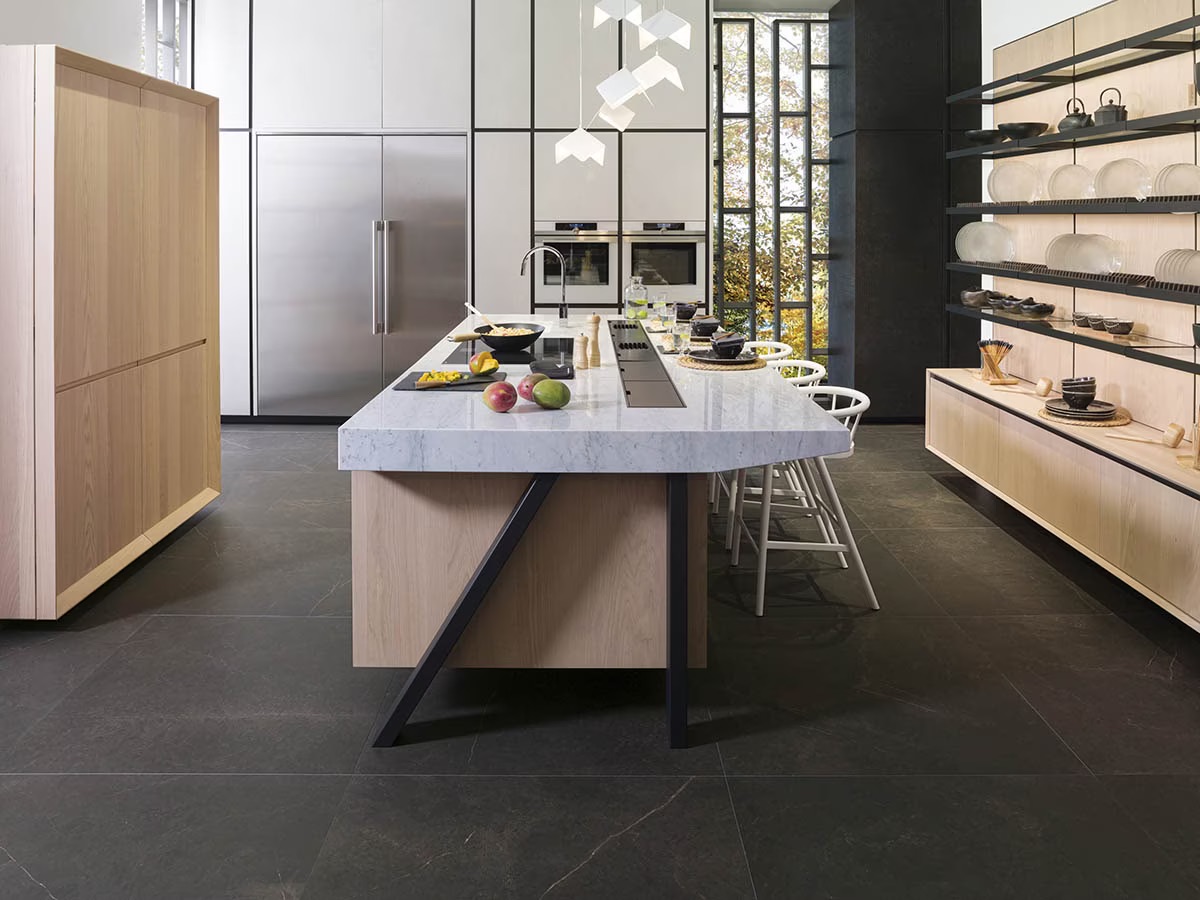
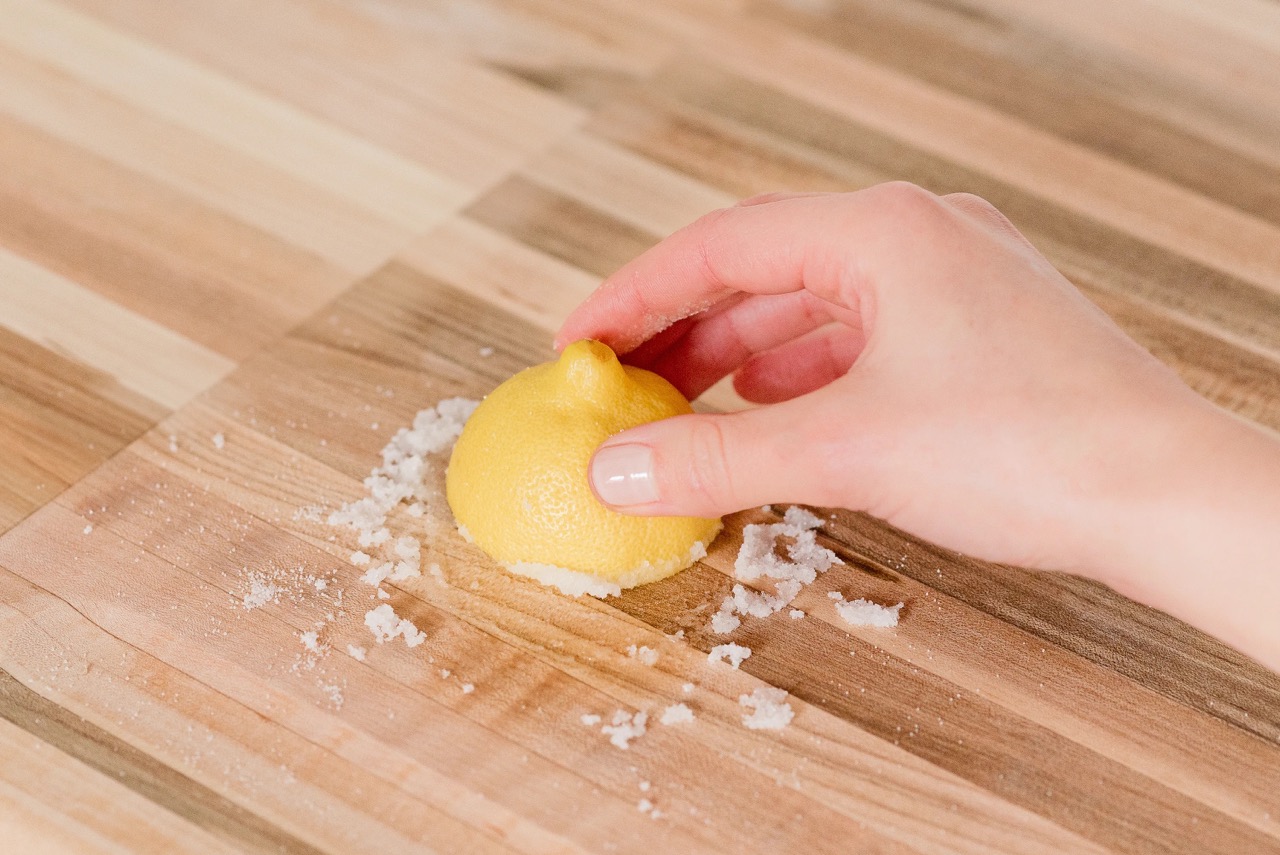
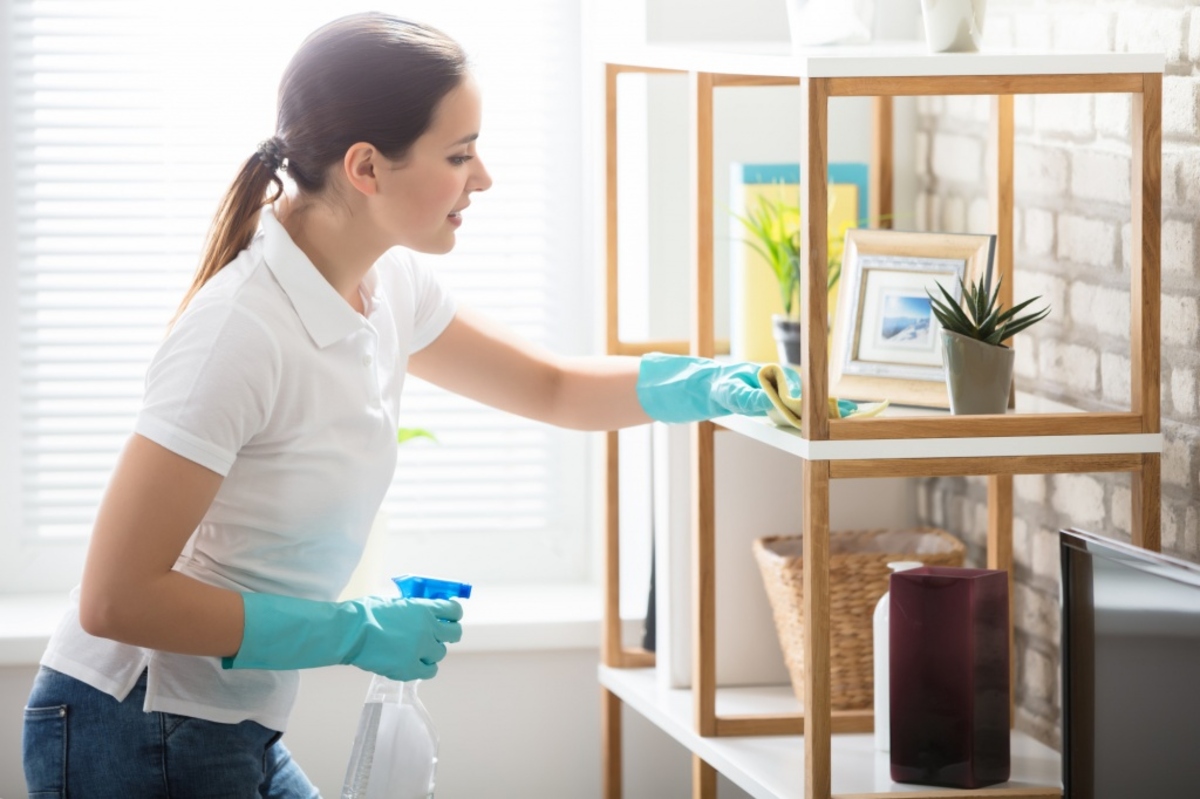

0 thoughts on “How To Clean Kitchen Countertops—Our Best Tricks For Any Material”